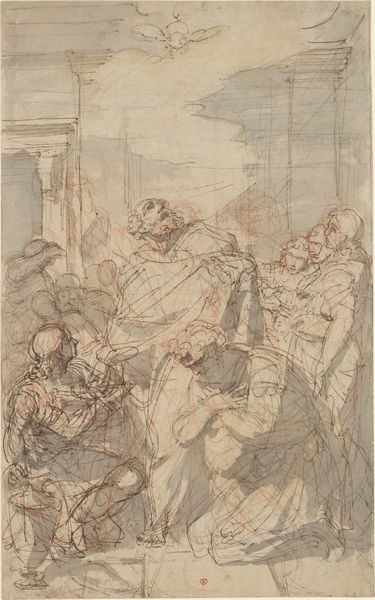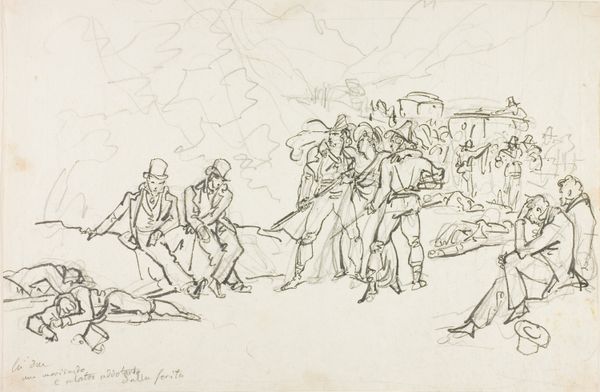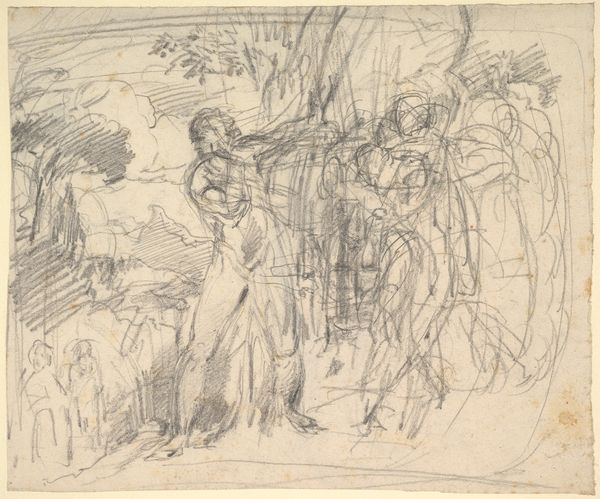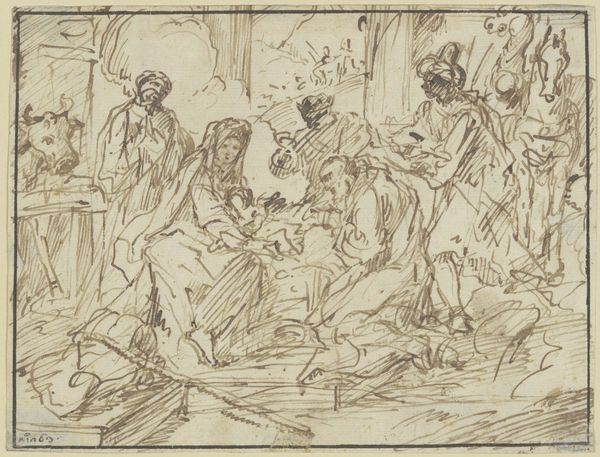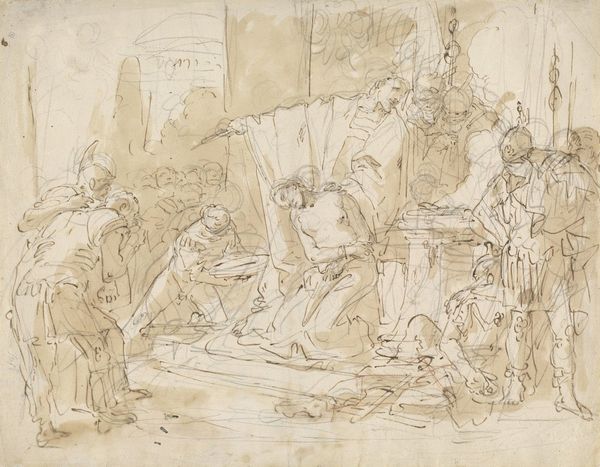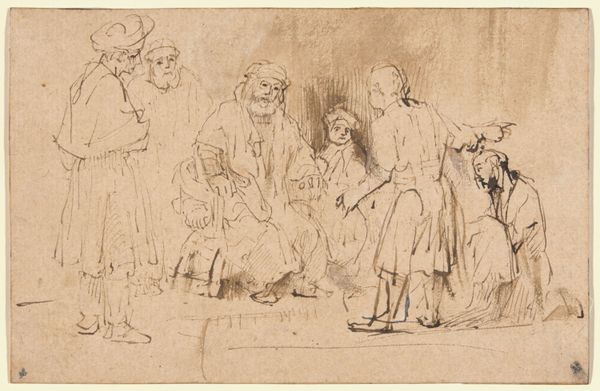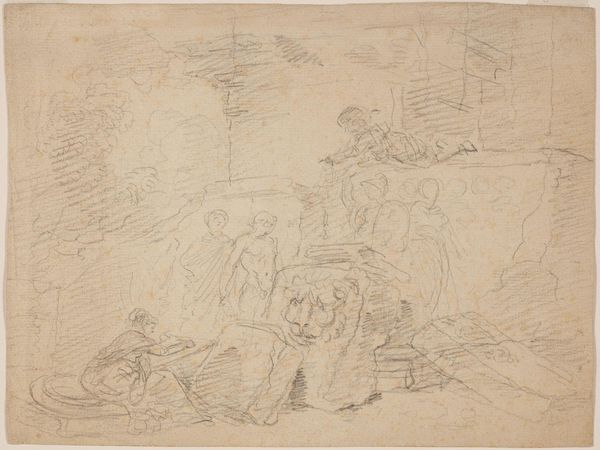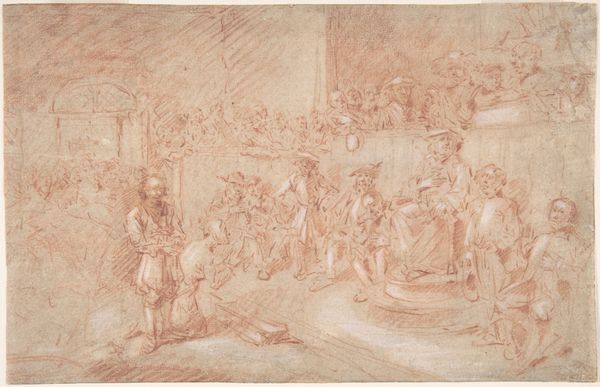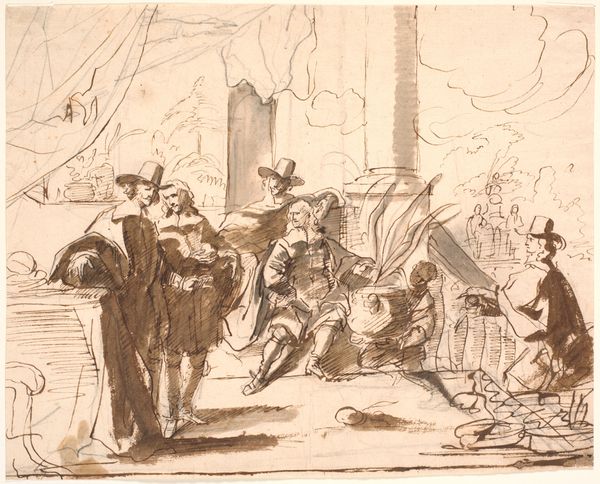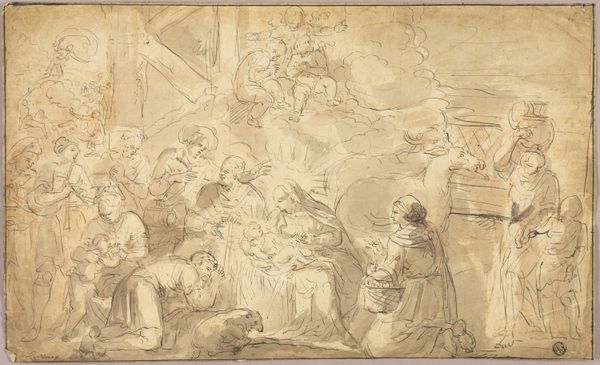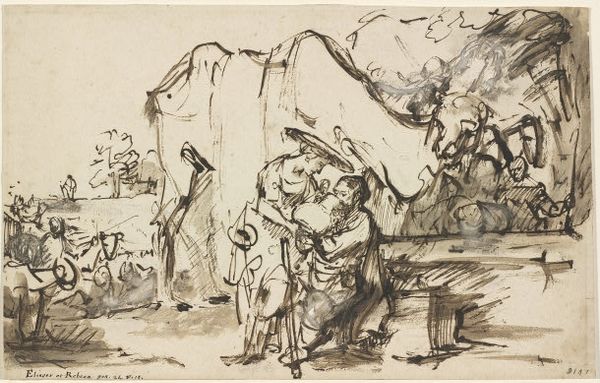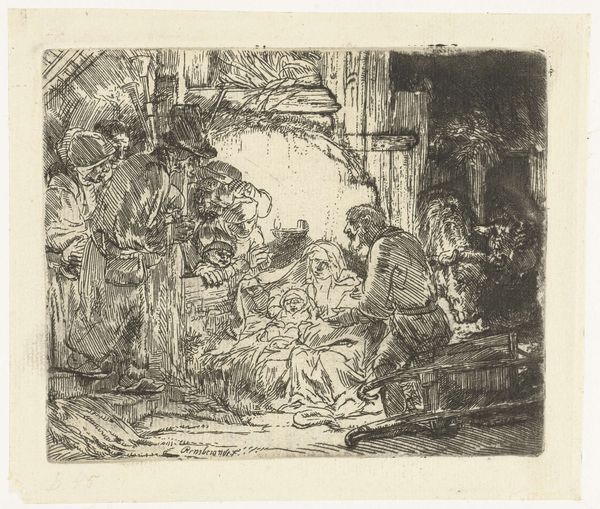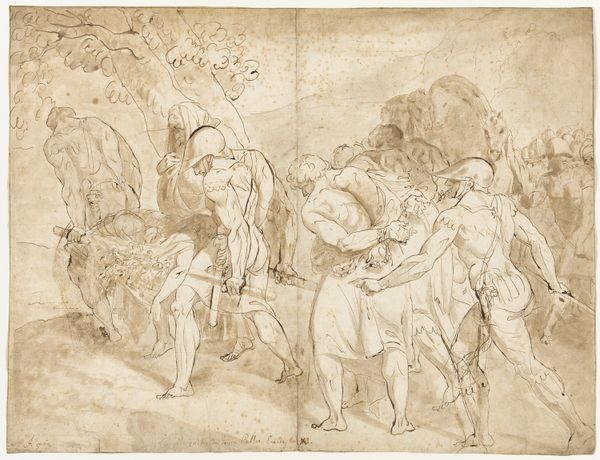
drawing, print, paper, ink, chalk, pen
#
drawing
#
narrative-art
#
baroque
#
ink painting
# print
#
figuration
#
paper
#
ink
#
chalk
#
pen
#
genre-painting
#
erotic-art
Dimensions: 364 × 241 mm
Copyright: Public Domain
Curator: Before us hangs Francesco Guardi's "Harem Scene," executed with pen, chalk, and ink on paper. What strikes you first? Editor: It's the looseness, that sketchy, almost frenetic energy. The red chalk lends a certain warmth, but it also amplifies the raw, unfinished quality. It feels immediate. Curator: Guardi, active in 18th-century Venice, was known for these swift, evocative drawings. Let's consider the material context: paper, ink, chalk. These were relatively accessible, aligning with the booming print market and Guardi's efficient workshop practices. Editor: Yet that very "accessibility" becomes complex in light of its subject, doesn’t it? We see the architecture sketched out—an implied space. The harem evokes fantasies of the Orient, doesn’t it? Notice how Guardi has rendered movement: a semiotic dance occurring with an audience implied by the figure reclining on the divan to the left. Curator: Absolutely, we see that tension between accessibility and the exotic, that these prints were often consumed within a rapidly expanding mercantile class fascinated with depictions of power, luxury, and even exploitation, that all fed a demand for Orientalist themes within European culture. Editor: See how that seated figure contrasts so starkly with the energy of the dancing figures. He is static. The whole thing feels a bit unsettling, a bit voyeuristic, with us gazing on that dance within its composed structure. Curator: It’s the paradox of the open secret, I think. These private pleasures became a matter of public fascination through the marketplace. Editor: Agreed. And Guardi is such a fascinating subject of contradiction here. It's simultaneously captivating and unnerving. Curator: For me, understanding this "Harem Scene" means not only recognizing its aesthetic qualities, but it reminds us of the structures of labor and cultural consumption inherent in its creation and distribution. Editor: And I find myself dwelling on how form embodies that unsettling mix of fascination and exoticism that we read into this piece from our perspective today.
Comments
No comments
Be the first to comment and join the conversation on the ultimate creative platform.

